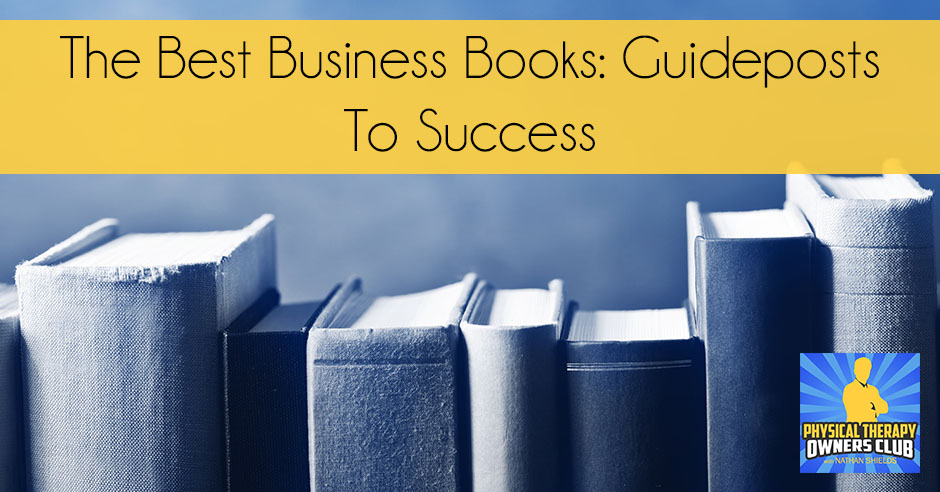
—
Listen to the podcast here:
The Best Business Books: Guideposts To Success
I’m not interviewing anybody but I thought I would bring to you some of the business books that we have most referenced in the Physical Therapy Owners Club Podcast, either by myself or by those who I’ve interviewed. Essentially those that have been most influential in our paths to success, so that you can compare against what your library looks like. I don’t have them in any particular order except for maybe the first one. I’ll share a little bit about the summary of the book and what I’ve learned and the experiences I’ve had with them, and why they are so influential to me personally. I’ll share some honorable mentions at the end that have also been life-changing and that are also must-reads from my perspective. Some of the main ones, seven in particular, I’m going to talk a little bit about and share with you my experiences. If you’ve had any experiences of your own, I’d love to know about them as well. You can always email me at Nathan@PTOClub.com.
Good to Great By Jim Collins

The book that’s highest on my list, and it’s not just my list but one of the main books that comes up on the Most Influential Book of American CEOs is Good to Great by Jim Collins. This is the first business book that I read that touched and influenced me and got me into reading more and more business books. It came down to that first sentence. If you’ve read it, the first sentence in Good to Great is, “Good is the enemy of great.” Once I read that sentence, it blew my mind. I shared it with my wife. I thought this is incredible and it hooked me right off the bat. As you consider things are going well, but could they be going great? Is there another level that you can attain? That was influential in my life and sometimes as I assessed what I’m doing at any given time, I assess it against, “Am I doing good and could I be doing great?”
The other concept that I liked within Good to Great, and something that me and my partner, Will Humphreys, considered quite a bit is, “First who, then what?” Placing the importance on the people that you surround yourself with and making sure they are star players. A lot of times we have this delusion that our great ideas and some great products that we produce are going to be the thing that gets us to greatness. A lot of times, it’s not necessarily that. It’s not the idea, it’s the delivery and the delivery is not just yourself, it’s your team. You have to have a team of A-players like I talked about with Jamey Schrier in hiring those A-players to get you to a level of greatness. We went so far in our physical therapy clinics to hold group interviews on a monthly basis, whether we were hiring or not, simply so that we could find rockstars. We’d advertise for such and we’d look for such. When we did find those standout people that we wanted to bring into our company, whether we had a position open for them or not, we would hire them. We’d find a position for them and inevitably be a matter of top grading. Someone would fall out during the process and we could bring in a rockstar in their place and led to the accumulation of some star talent on our team. It came back to that concept from Jim Collins, “First who, then what?”
Not all readers are leaders, but all leaders tend to be readers. Click To TweetThe one other experience that I had with Good to Great, and I remember where I was at and I remember listening to the book with my wife. It hit me like a ton of bricks because he shared within that book to consider a question. Consider one person on your team that you are having issues with or it’s causing some trouble. Consider if they were gone tomorrow, how would you feel? I considered one person at the time while I was reading the book. I thought if that person was gone tomorrow, they were at the front desk, things would be so much better. In that answer to the question was the fact that I wasn’t making a decision about that person. I was hemming and hawing, it wasn’t confronting the issue. Immediately that changed my focus, “If I’m feeling this way about this person, I need to get rid of them,” and it led me to make that decision. Good to Great has a number of concepts within it that are well-referenced like the hedgehog concept. I highly recommend the book and that’s not just me talking. Of the top 100 American CEOs, it’s one of the main books listed as the most influential. I highly recommend Good to Great by Jim Collins.
The E-Myth Revisited By Michael Gerber
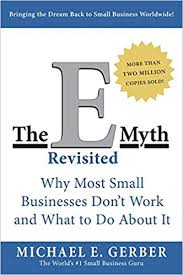
The next book that we’ve referenced quite a bit in my previous interviews with David Straight, Sturdy McKee, Chuck Felder, I’ve mentioned it also in Will Humphreys interviews, is The E-Myth Revisited by Michael Gerber. That book to me boils down to asking the question, “Do you own a business or do you own a job?” In other words, “Are you working on your company or are you working in your company?” It comes down to systematizing your business and making it a business that runs for you and without you. In The E-Myth Revisited, they pushed the franchise prototype that, at the heart and soul of every successful business is a business of systems. The importance of systems is that you can take those systems and replicate not only yourself. You can replicate the business and how you do things over and over again to see true mastery and success and growth. They asked them some key questions. Number one, and this is what you can ask of yourself, how can I get the business to run without me? Number two, how do I get people to work without my constant interference and I would add how do I get them to work without mine or other’s constant interference?
How can I systematize my business so that I can replicate it 5,000 times and each one of those times run smoothly? How can I own my business and be free of it? How can I spend my time doing what I love to do rather than what I have to do? This goes back to the heart of the reason for my podcast in general. It’s in creating stability and freedom and in order to do that, you have to have systems. They’re not in your head. They’re written down. They’re trained upon and followed by every member of the team. Every member of the team knows what they are supposed to produce and they know how to produce it. When it’s not being produced, then we make sure that they’re following the protocol so that it is an issue with following protocol and not the protocol itself. The E-Myth Revisited is a rather simple read and if I recall, it’s rather short. I haven’t read it in some time. What was important to me and my business partner in growing was the systemization of our processes. This is how we do things and that’s how we were able to grow and train employees.
What brings us to success is not the idea, it's the delivery; and the delivery is not just yourself, it's your team. Click To TweetMastering the Rockefeller Habits and Scaling Up By Verne Harnish
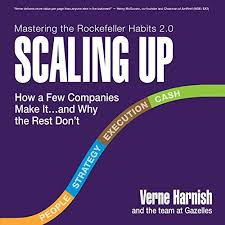
The third book is, and I’ll say my third and fourth book because they’re by the same author and one is a follow-up to the other and that is Mastering the Rockefeller Habits and Scaling Up by Verne Harnish. I referenced this with Will Humphreys, Sturdy McKee and Neil Trickett in my interviews with them. Mastering the Rockefeller Habits is a pretty simple read and it goes down to some of the business basics that I highly recommend. If you haven’t done it, you need to and that’s creating a mission, vision and values and also creating the BHAG. If you’ve heard that acronym, the big hairy audacious goal for the company, it talks you through getting those things set up. It also talks a lot about meeting rhythms and how important meetings are and a regular routine of meetings. You can go too far and create too many meetings and we learned that by experience in our own companies that we had too many meetings going on and as we scaled back and made them more precise, then they became more influential.
Think and Grow Rich by Napoleon Hill
Meeting rhythms are thrown out there in Mastering the Rockefeller Habits and to a certain degree in Scaling Up. In Scaling Up, they talk about the stages of growth and the blueprint that is needed in each phase of growth. Every small business goes through the different phases. There’s a people phase and a cash phase. It’s important to know which phase you’re in so that you know how to get to the next phase and that you can deal with the same issues that every other small business owners are experiencing in those phases. He also talks quite a bit about building a team of A-players. This goes back to what we were talking about in Good to Great. I talked about it with Jamey Schrier on his interview regarding hiring A-players because if you keep B and C-players around, you’re going to lose your A-players. You always want to be top grading, getting rid of the B and Cs and getting in the As. Mastering the Rockefeller Habits and Scaling Up by Verne Harnish. Good reads that you can use to grow your business.

The fifth one is an oldie but goodie and I talked about it with Sean Miller in his podcast and read it quite a bit more myself and that is Think and Grow Rich by Napoleon Hill. This book is going on almost 100 years old and the concepts are still very present and are continually referenced by business people. Napoleon Hill presents thirteen principles. I’d like to focus mainly on the first four chapters of Think and Grow Rich. It lays out the principles of desire and faith. When he says faith, he’s talking about visualization and belief in the attainment of a desire, gaining specialized knowledge and organized planning. It’s in those four principles that you’re able to take your ideas and bring them into reality.
A couple of the other concepts that are important and one of the biggest ones that you see even now was the concept of the mastermind. A mastermind is a group of individuals, anywhere from eight to twelve. They could be from different businesses, different professions that come together and discuss the issues that they’re having and maybe even the successes that they’re having. They shared with each other, so they have a group of minds and not just your own mind considering your own problems and thus able to come up with creative solutions that lay outside of your perspective. I know personally, we’ve got a lot of benefit out of joining the Entrepreneurs’ Organization, which is a nationwide network of business owners. They also have an accelerator group called Accelerator, for those businesses that are grossing less than $1 million. Accelerator and Entrepreneurs’ Organization were hugely beneficial in the growth of our clinics. If you have the opportunity to join one in your community, I highly recommend it or find some mastermind of your own. I know they have them out there. Google masterminds. I even believed that the APTA offers some masterminds through the PPS group.
Successful people see things for what they are and logically make a decision. Click To TweetOne last concept in Think and Grow Rich that I liked a lot was he talks about procrastination, which can be an issue for all of us. He found that successful people tend to be the people that are prompt decision-makers. The more we hem-and-haw, the less likely we are to make a decision. We’re essentially procrastinating and letting other outside influences and opinions affect our decision-making. Successful people see things for what they are and logically make a decision. This is related also into The Five Dysfunctions of a Team. The sooner we make a decision, the sooner you can find out if it’s going to fly or not. If it’s going to be successful, if it’s not going to be successful, then you know quickly and you can retrace your paths and start down a different path to be successful. Simply make the decision sooner, fail faster and move forward. That is a trait that Napoleon Hill recognized in Think and Grow Rich.
Rich Dad Poor Dad by Robert Kiyosaki
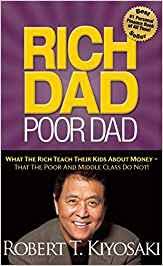
The sixth book a lot of you have heard about and maybe even read, not necessarily specific to business in some way it is but nonetheless is Rich Dad Poor Dad by Robert Kiyosaki. I mentioned this one in my breakdown of the HODS Symposium when Dimitrios was talking about the cashflow quadrant. That also relates back to what we’ve talked about in The E-Myth Revisited. Are you an employee of your business or do you own a business? If you remember the four quadrants, his cashflow quadrants are employee, self-employed, business owner or investor. Depending on where you are in either of those quadrants, means you have different behaviors in each and also the amount of money that you’re making increases as you go flow through those quadrants. You’ll make less money, simply a salary as an employee. You make a little bit more if you’re self-employed, but like Michael Gerber says, “You’re owning a job and not a business.” Then become a business owner where the business isn’t solely reliant on you, but you are responsible for the vision, mission, and values in maintaining the leadership and then being an investor in businesses that run without you and then kick you back passive income.
The 7 Habits of Highly Effective People By Stephen Covey
The sooner we make a decision, the sooner you can find out if it's going to fly or not. Click To TweetThat’s Robert Kiyosaki’s big thing from what I gather is passive income and creating assets. Building your list, building your portfolio of assets and not expenses. Remember your house is not an asset. I have to constantly remind myself of that. Build these assets so that you can have passive income and then you’re able to invest in more businesses, real estate, you name it. The other thing I liked about Rich Dad Poor Dad was a change in mindset. I grew up in a household where we didn’t have a lot of money and a constant refrain was, “We can’t afford that.” In the Rich Dad Poor Dad story, the rich dad changed the mindset going from, “We can’t afford that” to “How can we afford that?” I have to do that even nowadays, “I don’t know if we can afford that. If we can afford to do such and such a thing.” I have to check myself and say, “How can I afford that?” If I saved on this and I did that and did this to make a little bit of extra money, we can set that aside and purchase blank. There’s a change in mindset that is incredibly valuable in Rich Dad Poor Dad. That’s changing your mindset from, “I’m a victim. I can’t afford that” to “How can I be powerful in this situation and present myself so that I can get the things that I want?”
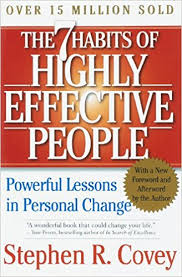
The next book and the last book that I’ll highlight that I wanted to reference because these have all been referenced quite a bit. This one especially so came up in my interview with Bill Dodson and that is The 7 Habits of Highly Effective People by Stephen Covey. In The 7 Habits, the one thing that I got out of that and I continue to use to this day is the Covey quadrant. In the Covey Quadrant, we’re talking about time management. In those quadrants, we list items that are urgent and important in the top left. In the top right, things that are important. In the bottom left are things that are urgent and not important, and in the bottom right are things that are not urgent and not important. If you go through the book or if you look for the Covey Quadrant online, you’ll see that in the definition, you want to be living most of your time in the top right quadrant. That is doing those tasks and responsibilities that are important but not urgent. As you’re doing that, then your time runs smoothly and you don’t get stressed out too much. You can use that to your advantage as you have a long list of tasks of things to do to filter out those things that you can work on and get the most important things done.
The 7 Habits, just to highlight those and that is be proactive. Begin with the end in mind, especially as you’re considering goals and what you’re trying to create with your business. Number three, put first things first. Most important things first, even in your daily to-do lists. Knock out those items and those tasks that will cause the greatest influence for everything else. Number four, think win-win. Number five, seek first to understand and then to be understood. This is huge in your interactions with your employees, especially those that might be acting up inappropriately or unexpectedly. First, seek to understand where they’re coming from as you sit down and do one-on-ones with them, and then you can get your point across as to, “This is how I perceive what’s going on.” This is how it’s coming across so that they can understand you. Seek first to understand then to be understood. Next is synergize, leverage your differences for good and lastly is sharpen the saw.
Seek first to understand then to be understood. Click To TweetSharpen The Saw
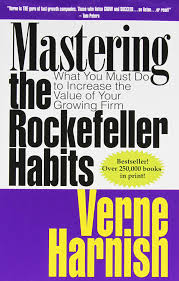
Sharpen the saw can pertain to all of these books that I’ve talked about and that it’s constant learning. It’s constant growth and implementation to become a better leader, to become a better owner and attain the goals that you want to attain. Some of my honorable mentions and I have to say these first two have been not just business books. They have business aspects to them. When we’re talking about it, when you look at some of these business books, there’s so much of it that can be utilized within your personal life. These two, in particular, are life changing and the ones that I’ve referred to friends and family members that aren’t necessarily business owners at all. Those two are Leadership and Self-Deception and The Outward Mindset. I highly recommend Leadership and Self-Deception to recognize where you’re standing in relationship to the people that you’re in relationships with and to see where you’re coming from.
The other honorable mentions consist of The Five Dysfunctions of a Team by Patrick Lencioni, Rocket Fuel by Mark Winters and Daring Greatly by Brené Brown. I could go on for quite a long time about these books as well, but the ones that we’ve referenced quite a bit and in my interviews are the seven that I highlighted here. Share with me some of your books and what you’ve learned at Nathan@PTOClub.com. I’d love to know which ones have been influential for you. We’ll continue to have more guests that referenced these books. I know in the future, we’re looking to interview Judy Cirilo who has been influenced by The Five Dysfunctions of a Team by Patrick Lencioni. I know I’ve handed out Rocket Fuel to a number of people in the past, to fellow PT business owners, especially for those who are wanting to become visionaries and have an office manager that can help them. Look at them yourself. If there are any that speak to you, I highly recommend you read them. Audiobooks are a great way to do that on your commutes. After you’ve listened to my podcast, throw in the audiobook of your favorite business book and let me know what you get from it. Hopefully, you find yourself positively influenced by the books that I brought up. I will see you next week.
Important Links:
- Nathan@PTOClub.com
- Good to Great
- Jamey Schrier – previous episode
- David Straight – previous episode
- Sturdy McKee – previous episode
- Chuck Felder – previous episode
- Will Humphreys – previous episode
- The E-Myth Revisited
- Mastering the Rockefeller Habits
- Scaling Up
- Neil Trickett – previous episode
- Sean Miller – previous episode
- Think and Grow Rich
- Entrepreneurs’ Organization
- Accelerator
- The Five Dysfunctions of a Team
- Rich Dad Poor Dad
- Bill Dodson – previous episode
- The 7 Habits of Highly Effective People
- Leadership and Self-Deception
- The Outward Mindset
- Rocket Fuel
- Daring Greatly
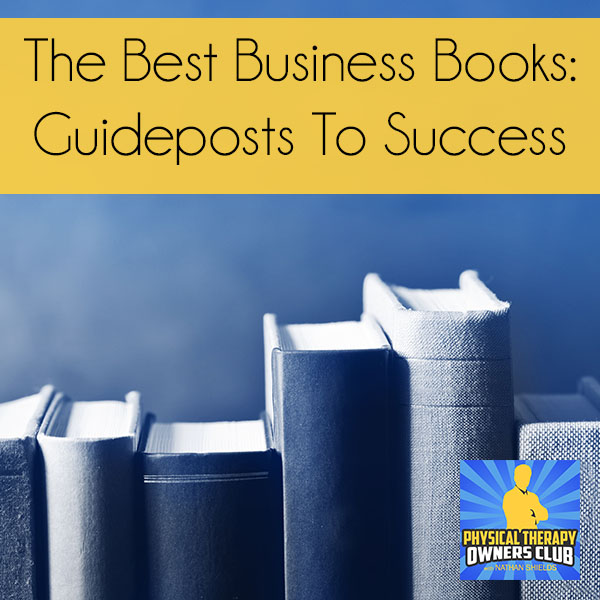
[…] did an episode of The Best Business Books that are most often referenced between me and my guests and it’s a lot of those same ones except […]